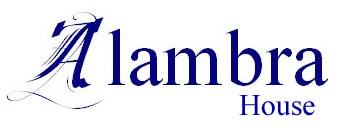Location
Franskraal, at the edge of the Danger Point Peninsula, is an unpretentious town that at its western extreme is hugging the neighbouring coastal town of Kleinbaai. Franskraal is reached after a few km on the R 43 from Gansbaai.
Franskraal has a long sand-beach crossing the outlet of the Uilkraals-estuary, a known birding hotspot. Just next to the first row of houses of Franskraal is the entrance to a small but old milkwood-dominated forest. The marked "Groot Melkhoutbos Trail" is open to the public. Some interesting birds and plants canbe spotted here. Immediately at the cliffs of Franskraal is the Strandveld Museum, a little historical gem. It gives insight in the local history and has the largest collection of relics of the HMT Birkenhead that wrecked at Danger Point in 1852.
 |
Strandveld Museum -
A small privately owned museum at the cliffs of Franskraal. The Strandveld
Museum is a little gem. The museum has the largest collection of relics
of the HMT Birkenhead, that wrecked off Danger Point and several other
historical items. The owners are local historians and marvellous story
tellers who gladly take you on a trip through time.
Groot Melkhout trail -
Though this small trail is situated right next to the Franskraal residential
area, the presence of Franskraal close-by is not noticed anymore the moment
one walks under the canapés of the Milkwood trees. The trail is
a circular route of 2 km and it takes just about an hour to complete if
the nature lover takes time to enjoy what the bush has to offer. Informative
brochure is obtainable from the tourism office.
Klipgat Cave -
When Neanderthal man was still ruling supreme in Europe, modern people
had provide some of the earliest evidence in the world of modern people.
Such early remains have been found in only three South African sites and
in the Middle East. Klipgat cave is one of the most important cultural
assets in the Western Cape.
Dripkelders in De Kelders - 1 km from
Gansbaai
This cave with active stalactites and stalagmites is one of the most striking
features of the whole conglomerate of smaller and larger caves along the
coast of De Kelders. It has a fresh-water pool deep under-ground and its
complex of corridors is rumored to extent all the way to the underground
of the Franskraal Mountains. Once the Dripkelders Cave was part of a hotel
built on the land above the caves. This historical building with extended
patios was unfortunately demolished in a moment of short-sightedness,
but would -if still erect- today certainly have had heritage status. At
the moment of writing the Dripkelders are closed to the public due to
further research into the impact of visitors into the cave, but it is
expected to open soon for limited numbers of interested visitors. You
will however at any visit to Gansbaai and De Kelders be in close contact
to the cave: the water out of the tap is sourced from the fresh water
out of the Dripkelders Cave. The steps down to the entrance of the Cave
are open to the public and pass one of the look-out points of the old
whaling station. No surprise therefore that the surrounding cliffs are
the best spots to see whales.
Duiwelsgat - 2 km from
Gansbaai
Duiwelsgat translates into "Devil's hole". This ceiling-less
cave indeed has some devilish characteristics. Local folklore tells that
the cave was discovered for the first time after cattle was disappearing
for seemingly no reason. When they found a dead cow in the floodline,
the investigation deepened, resulting in the find of a hole in the ground
(hidden from sight by thick bush). Today a low wall should protect people
from falling in. Looking down into this deep hole (not recommended for
people with fear of heights), you can see the foamy water coming in with
each wave. How devlish this hole might be, the devil had nothing to with
it. The original name was "Duiwegat" (hole of the pigeons),
the "l" and the "s" were only added later and the
name became "Duiwelsgat".
